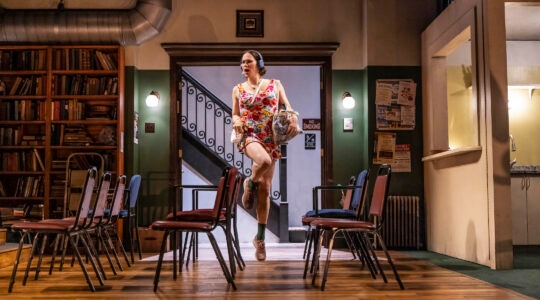It was the shift in what was playing on the radio, more than anything else, that tipped me off to the Jewish lilt of southern Hungary.
Eastern Europe is a region where you can still get your geographical bearings by flipping the dial. In Greece, the plink-plink of bouzouki is a tip-off. German-language traffic roundups? Austria is nearby. Bouncy, minor-key Oriental pop? You’re in the Balkans, anywhere from Turkey to Romania.
Only the radio, and a pair of sleepy border guards, alerted Oggi and me to our crossing from Serbia into the wild green forests of Hungary, en route to the resorts along Lake Balaton. The sleepy villages here were once steeped in Jewish life, and in some cases they still are, but you have to know where to look — or listen.
A wild czárdás (Hungarian dance tune) came on, suggestive of klezmer, and it was the only thing I’d understood since the border crossing. (I can mostly grasp Serbian, with its Latin and Slavic cognates, but Hungarian is in another league.)
We drove through a small town, and the church steeple was decorated in whimsical floral motifs — another Hungarian signature. I’d seen those same motifs in the gorgeously restored 1902 synagogue in Subotica, a lovely Art Nouveau city in the Hungarian-inflected Vojvodina region of Serbia, where the chazzan and congregation president showed off the historical landmark that is a point of pride for all Suboticans — Jewish, Hungarian and otherwise.
A crowd pouring out of a grand-looking edifice caught our attention, and Oggi wondered if the building was a synagogue (it turned out to be a church). “Well,” he said defensively, “in this part of the world, the odds are pretty good.”
He had a point. Lake Balaton is known less for Yiddishkeit than for its longtime status as the jewel of Hungarian vacation spots; the last thing we expected to find, amid shoreline campsites full of inflatable flamingos, was the House of Jewish Excellence, a municipal museum dedicated to the lives and accomplishments of more than 100 Jewish doctors, scientists and mathematicians.
But Hungary is surprising that way. The House of Jewish Excellence opened this year in a former synagogue (also a former church) in Balatonfüred, a pleasant, historically Jewish town on the lake’s north shore. Anyone tired of water polo can take an air-conditioned breather amid high-tech exhibitions celebrating a predictably masculine lineup from Einstein to Freud to, yes, Mark Zuckerberg.
Speaking of water polo: Hungarians dominate the world in this sport, and along Lake Balaton, it’s easy to see why. Groups of swimmers toss balls across the calm, silty-green waters along virtually every inch of this 150-mile shoreline (which is visible from all sides; think Lake Como with smaller hills, not the Great Lakes).
In the post-Communist era, Balaton towns are less popular than they used to be, and also less Jewish. Longtime Yiddish-speaking hubs like Tapolca, a north shore village with a historic cemetery and a synagogue-turned-secular community center, ebbed as Jewish residents made aliyah or migrated to Budapest.
Once the Iron Curtain came down across Eastern Europe, Hungarians, along with everyone else, discovered the far more impressive Adriatic coastline. Compared to the medieval fortresses and turquoise bays of Croatia and Montenegro, the murky waters and pleasantly rolling hills of Balaton come in a distant second.
But like the Hamptons for New Yorkers, Balaton remains a favored weekend getaway from Budapest, an hour-and-a-half drive to the east. Judging from the amount of German I heard, Balaton is also very popular with Austrian tourists.
Balaton has a decidedly sporty vibe. Packs of bicyclists accompanied us everywhere — along past Soviet-era high-rise hotels and elegant stucco mansions, and through forests and grassy fields. Families spread out on campsites along the shore, kayaking and playing volleyball and badminton.
Which side of the lake is best? There’s arguably more to do along the flatter south shore, where the youthful party crowd flocks to the nightclubs of Siófok, Balaton’s largest town. Summer brings a slew of cultural festivals there, with open-air concerts and dance performances.
The north shore is hillier and more picturesque, especially as you go west, where terraced vineyards and pastel villas give the landscape a Tuscan feel (Balaton wines are among Europe’s best). On either side, as in the Hamptons, the scenery is more rural and the feeling more upscale the farther you get from the big city.
Urbanites still come because what Balaton offers — and Croatia in August does not — is relaxed, uncrowded countryside. Traffic is light; prices are gentle; there’s plenty of room for everyone. And you’ll hear czárdás … maybe even klezmer … on the radio.
The New York Jewish Week brings you the stories behind the headlines, keeping you connected to Jewish life in New York. Help sustain the reporting you trust by donating today.




